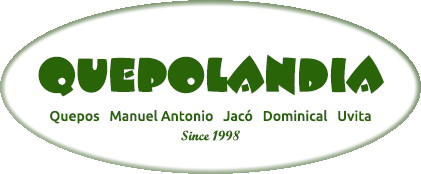White or Whole Wheat
We humans have an ancient love affair with bread. Sources vary in terms of how long bread has comprised an essential part of our diet – some say 15,000 years. It’s a food that does not require hunting or foraging, and with the spread of agriculture thousands of years ago, bread secured a place in our diets. Who among us does not like bread??
We eat it and we love it, but that doesn’t mean we know a lot about it. Many people question the nutritional value of whole wheat bread versus white bread. What are the actual differences?
Grain Structure
A kernel of wheat has 3 layers: bran, germ, and endosperm.
The bran is the hard outer layer of the wheat kernel and is filled with fiber, B vitamins and minerals. Bran and fiber slow the process of breaking down starch into glucose, thus helping maintain steady blood sugar rather than causing spikes. Fiber helps lower cholesterol and move waste through the digestive tract. It can also help prevent the formation of small blood clots that can lead to strokes or heart attacks. Removal of the bran makes the grain easier to chew.
The germ is the nutrient-rich part of the kernel that sprouts into a new wheat plant when planted. The germ has the wheat’s protein, healthy fats, vitamin E, phytochemicals, and antioxidants. Phytochemicals and essential minerals found in whole grains may help prevent some cancers. The germ is removed in refinement because of its fat content which reduces the shelf life of processed wheat products.
The endosperm is the interior layer, filled with carbohydrates, protein, and bits of B vitamins and minerals. It’s easy to digest.
Whole wheat flour is made from grinding all parts of the wheat kernel into a powder.
White flour is “refined” by removing the most nutrient-rich parts of the wheat kernel, the bran and the germ, before grinding into a powder.
Refining the wheat creates fluffy flour that bakes up into light, airy breads and pastries.
Refining the wheat strips away more than half of wheat’s B vitamins, 90% of vitamin E, and nearly all of the fiber.
White flour is fortified, replacing the nutrients removed in the refining process. This works for some nutrients, but many health-promoting elements of whole grains, such as phytochemicals, can’t be replaced.
Nutrient Content
Whole wheat flour is higher in protein, fiber, calcium, potassium, magnesium, phosphorous, zinc, copper, manganese, selenium, and vitamin B6. It’s also higher in phytochemicals, important for disease prevention.
White flour is higher in calories, carbohydrates, folate and folic acid, and iron.
Whole wheat flour has the same or more protein than most beans!
Glycemic Index
Research by the National Institutes of Health has found that the glycemic response in the body is similar in both whole wheat and white flours. However, when either flour is supplemented with about 40% chickpea flour, the glycemic index reduces.
This is critical information for those with diabetes. In terms of the glycemic index, both whole wheat and white flours perform the same in the body, according to this research.
Gluten
All wheat contains gluten. Other glutenous grains are barley, rye, malt, brewer’s yeast, and all derivatives of wheat including farro. Rice, oats, quinoa, and buckwheat do not contain gluten. Those sensitive to gluten, however, should look for gluten-free oats, as oats are generally processed on the same machinery as wheat and therefore pick up some of wheat’s gluten.
Gluten is very high in protein.
Gluten also causes inflammation in the body. Many diseases of inflammation go unseen – e.g., heart disease, cancers, digestive issues. Some, however, cause us regular pain. If you suffer from joint pain, removing wheat from your diet will reduce your discomfort.
Make Your Own
Bread is extremely easy to make, and in this climate, very gratifying. You won’t find bread made with 40% chickpea flour in these parts, anywhere. But you can get both whole wheat and chickpea flours around town and easily make it at home. It just takes a moment.
Low GI Bread Recipe
Dissolve about 1/2 teaspoon of yeast and a teaspoon of sugar in a bit of water. Set aside. This activates the yeast. In a few minutes, foam will accrue on the top. This is necessary and means the yeast is working properly. Close and refrigerate the open yeast packet.
In a large bowl, add your desired flours in your desired combination and desired amount for however much bread you want to make. Put in a half-to-full teaspoon salt.
Add a bit of water and mix it with the flour and yeast mixtures. Add water in very small amounts and mix well until you get a dough. It should not be sticky. If the dough is sticky, add flour until it is not sticky.
Knead the dough on a floured surface for 10 minutes. This process stretches out the gluten and makes the bread chewy. (To knead: press and push the dough away from you, flattening it. Then fold the edges into the center and press and push again. Repeat for 10 minutes.)
Set aside. Cover with a damp towel or piece of plastic. In about 60-90 minutes, it will grow. Poke your fingers into it to shrink it back down, then let it rise again.
Make any shapes you want. Bake at 350F. If you put it into a cold oven, you will get a hard crust. If you put it into a preheated oven, you will get a softer crust.
Keep extra dough in the refrigerator or freezer. Enjoy!
Michele Poff is a professional writer, living in the Central Coast. She is called to lead people to their best selves. To this end, she writes books to improve the life experience and leads well-being retreats in the Brazilian Amazon. You can find her through her websites paradisefoundretreat.com and accomplishcomm.com.

